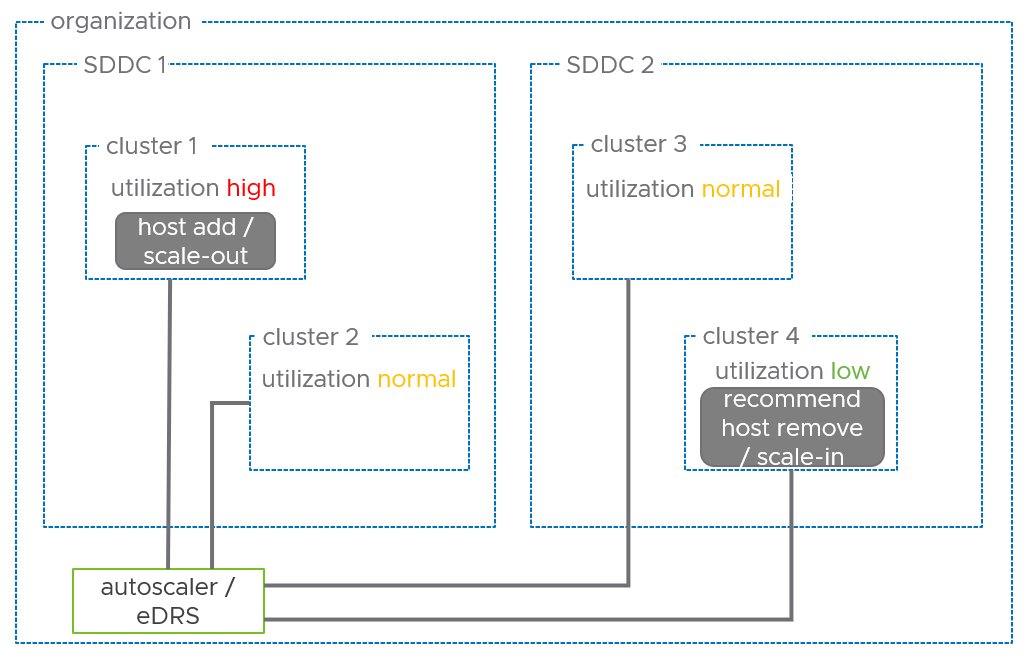Better Resource Efficiency with Cross Cluster EDRS

The Elastic Distributed Resource Scheduler (EDRS) capability lets you scale your VMware Cloud on AWS clusters according to demand by adding or removing hosts automatically based on specific policies. This feature further extends the availability and resiliency of the SDDC cluster and removes the infrastructure operations burden from the customer.
EDRS helps with the optimum utilization of resources. However, the boundary for DRS is the cluster construct. Customers have multiple clusters for their business segregations, and cloud computing resources are shared within these clusters. The Cross-Cluster EDRS capability helps customers to understand what clusters in their SDDCs can be scaled-in if there are clusters that are 'under-utilized'. By doing so, customers achieve the most optimal use of resources within their subscriptions.
Whenever EDRS recommends a scale-out for a specific cluster, depending on the EDRS policy, EDRS will proactively check cluster utilization for all clusters in a customer org. When it sees a cluster under-utilized, EDRS will send a notification by e-mail with the recommendation to scale in that specific cluster.

The workflow for cross-cluster EDRS recommendations is as follows:
- Find all the clusters in the organization.
- Retrieve resource utilization values for all clusters in all SDDCs.
- Filter out the clusters with scale in thresholds below CPU=65%, Memory=65%
- If candidate clusters are found, notify the customer about underutilized capacity in the candidate cluster.
- If no cluster is found with the agreed scale-in threshold values, find the cluster with the least corresponding resource utilization values and at least 4 hosts.
- Check if a potential host removal from that cluster would violate vSAN slack space requirements. If not, select the cluster as a candidate and notify the customer about underutilization.
- If vSAN slack space requirements are violated, then the workflow concludes that there is no candidate cluster for resource optimization.

The recommendation by e-mail would look similar to this example. Remember, today the cross-cluster EDRS capability is 'recommendation only'. Customers still need to manually remove a host from an under-utilized cluster. The goal here is to make sure all clusters and hosts are utilized most efficiently. Therefore we encourage customers to review the EDRS policies in the Cloud Console, as using the correct policy for your environment results in potential cost savings.
